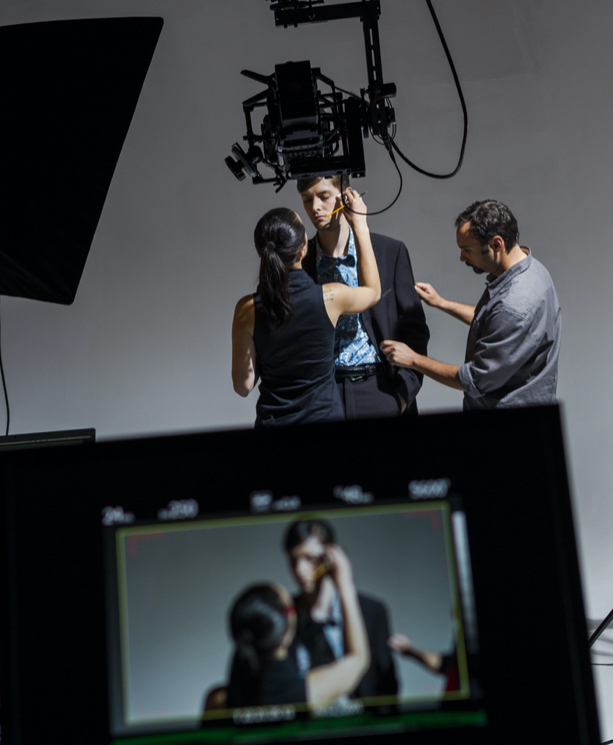We all know how difficult it is to be creative, especially when it comes to creating a product video. In today’s marketplace, competition is fiercer than ever, and with hundreds of hours of video content uploaded to YouTube per minute, how can anyone compete? Our customers look to us for guidance on the best steps to take when it comes to creating the ultimate product video.
We have news for you; all marketing and sales videos are not alike.
First, we want you to envision the ultimate sales video for your product. Imagine that budget is not an issue, you can get celebrity endorsements, the ideal locations, and an A-lister Hollywood director. With all these elements in your corner, what could go wrong? Right?
Now let’s turn the tables; you have a limited budget, one location, and a family member that goes to film school directing. In this scenario, what could go wrong? Everything?
Don’t panic. All is not lost!
There is a common thread in both scenarios, and it’s the story! Yes, your product has a story. Your company has a story. Your brand has a story, and that story is your brand! When you started your company, you created a product that people wanted to buy. And they did! So, for a moment, try to remember that ideal customer. Who are they? Where are they? How will you speak to them through video?
The answer is storytelling.
Sharing stories is a way people relate and identify with one another throughout the ages. Digital storytelling through video, when done correctly, will not only appeal to existing customers; but an engaging product video can convert and turn new customers into repeat customers. You may ask yourself, how do I create a stimulating and engaging product video? What do I look for? How can I avoid going down the video production rabbit hole?
We can guide you through the proverbial video production maze. Our step-by-step framework will give you the confidence to create stellar product videos that sell!
Video is a time-based transmission which differs from 2-dimensional print ads. Print ads are clear, direct, and to the point, whereas a video is more complex and has multiple layers; they must offer value and have ornamentation to capture the viewer’s attention. And the longer the video, the harder that becomes to keep your audience engaged.
If you fall under these categories, you can get away with creating a video that has little production value:
- Your brand/product is a pre-eminent leader in the field, and people immediately recognize your brand on any medium (think Apple, Nike, or Coca-Cola).
- Your video is seen by existing buyers or loyal fans who are much more forgiving if your video is not impressive.
- Your video appears deep within a marketing campaign after the viewer’s attention has already been established, and the sales pitch completed.
- Your video is a non-direct-to-camera format such as animation, whiteboard, a V.S.L. (Video Sales Letter), or text-on-voice.
Tip: When making a product video, remember if you want people to buy your product after watching your video, follow this simple formula: Emotion must be higher than Resistance.
Emotion > Resistance
There are eight elements to true story-selling that captures viewers:
- Script – What is said
- Performance – How your message is said
- Appearance/Aesthetics – Depth, complexity, polarity vs. contrast. Even the wardrobe plays into this element.
- Location, Location, Location – What happens in the frame says a lot.
- B-Roll & Stock – Adds imagery and sets the mood to complement your message and creates emotion.
- Graphics/Titles – Completes your visual message with a text or branded logo.
- Music and Sound Effects – Drives the narrative forward.
- Lighting – Sets the mood and drive attention wherever you want to lead your viewer.
As you can see, there is more to creating a product-based video than meets the eye. Ultimately when you think of the video and only focus on the script, this becomes a very one-dimensional platform because you view the video as a single message. You think your message comes through clearly. This theory works on a two-dimensional medium (print, written ads); however, video is four-dimensional. It uses the three dimensions of space (physics) and the fourth being time. With four dimensions in a marketing message, you must have a multi-dimensional approach. Start with the eight elements of video story-selling.
You can pick and choose which elements you want more or less of to tell your story. What characters will be dominant, and which will be supporting? Will lighting help tell a dramatic story? Or will it be the music and sound effects? Or will it just be the script using a “talking head” approach? Ultimately, the choice is yours because you know your customers.
Measuring how each element contributes to the overall experience of your video is simple. On a scale of 1-10 (one being the worst), you want each of the eight elements to start in neutral (5), meaning it doesn’t add, detract, or distract your viewer. The viewer is so at ease they barely notice that element. Think about when you watch a video, and you know something is off, but you can’t tell what it is. It may be the lighting, or the sound, or the aesthetics of the video. You just know something is distracting, and you remember the distraction instead of the video’s message. That is not the feeling you want to leave viewers with when it comes to your product video message.
Here is the product video experience scale (1-10) for each character element.
Best:
- This element is the best. You have compelled the viewer to buy and share your video with others.
- At this level, your video has is memorable. Your viewer relates to the product and inspired to buy.
- This element causes viewers to be delighted or surprised and maybe even captivated. More than likely, they keep watching and are drawn to buy.
- Unlike #3, your element is noticeable in a good way of grabbing your viewer, and in the best scenario, they will watch until the end.
- Element draws your viewer in because the video is more exciting and dynamic.
Neutral:
5. Our starting point where the element used is entirely neutral and doesn’t add, detract, or distract viewers. They are open to receiving your video’s message.
Worst:
- The element is slightly off causing a viewer to question: something is off, what is off, why is this off?
- Your element is noticeable in the worst way, so it distracts viewers from your message.
- Your viewer is completely distracted from your message because the element calls attention to itself.
- Your video is boring or unwatchable because the element is so badly used or missing from your video.
Very few videos reach a score of ten across the board; however, certain aspects of your video may reach a 10. Your job is to know who your customer is and connect with them using all eight elements.
Take time to watch product videos on the web. Create a scorecard and analyze each of the eight elements: script, performance, appearance/aesthetics, location, b-roll/stock, graphics, music & sound effects, and lighting. Which videos have the elements that are Super Bowl half-time quality and rank 6 – 10? And which videos fall short and are flat, causing you to click away?
Now on your scorecard, compare the best and the worst video elements side-by-side. What pulled you in? Was it the script or perhaps the lighting? Did the music remind you of a happier time? What emotions did you feel when you were drawn into the better videos?
You can see that the crafting of emotion and compelling elements are a critical component of a winning product video.
The next step is the actual storytelling or what we call story-selling. When you use storytelling in your business, this sets off a chain of events with your audience. You immediately begin to build a meaningful and authentic relationship with your audience. They can bring people together through shared goals, dreams, desires, or values. These relationships are forged with a mutual understanding and a bond of trust (the most important ingredient).
Stories should be the heart of your message, and your video’s message must extend from the heart of your business to the heart of your customer. Without this fact, you cannot build customer loyalty (or generational loyalty).
You are a storyteller, and your product video is your medium. It may reach tens of thousands of viewers (or millions). You already have the power within you to tell that story. We all do. From the time we were born, we grew up hearing stories. As we grew, our taste matured, and we watched television and movies for more storytelling. Stories are all around us. But how can you tell a story about your product and business?
The answer is more straightforward than you think.
Fill in these blanks:
My personal story is _______________?
My expertise is _______________?
My business does _______________?
My products do _______________?
My business stands for _______________?
My products contribute to the world (how) _______________?
My product helps my customers (how) _______________?
If you keep all these questions in mind, you will develop stories and backstories on each of your products. When your customer or potential customer sees your story or hears your story they begin to identify and immediately think “me too!” Your stories are creating emotional connections with your audience. So, whether you are solving a problem or fulfilling a need, your company’s product story must always connect with your audience on an emotional level. Your video must show them why they need your products. Your video must pull at their heartstrings and block any resistance. Their five senses must be drawn in.
Audience viewers look and connect with product videos that touch all five senses:
Sight: (The beautiful sunset as you drive a luxury car down a road)
Sound: (The crunch of a chip or the fizz of a soda bottle being opened)
Taste: (The juicy burger at 9 PM or pizza coming out of the oven)
Smell: (The freshness of clean laundry or the smell of coffee in the morning)
Touch: (The softness of a blanket from the dryer or a baby’s caress)
By building an engaging video, you will have a higher conversion rate versus the average boring talking-head video. Product videos that utilize the powerful eight elements, while stimulating any of the five senses, connect and captivate audiences, thus, converting them into loyal customers.
No more fluffy, boring, unnecessary details. Start with a bang and flash forward into your story-selling. This is what you represent; this is why your product was created.
Now go create your videos and build new audience relationships.


